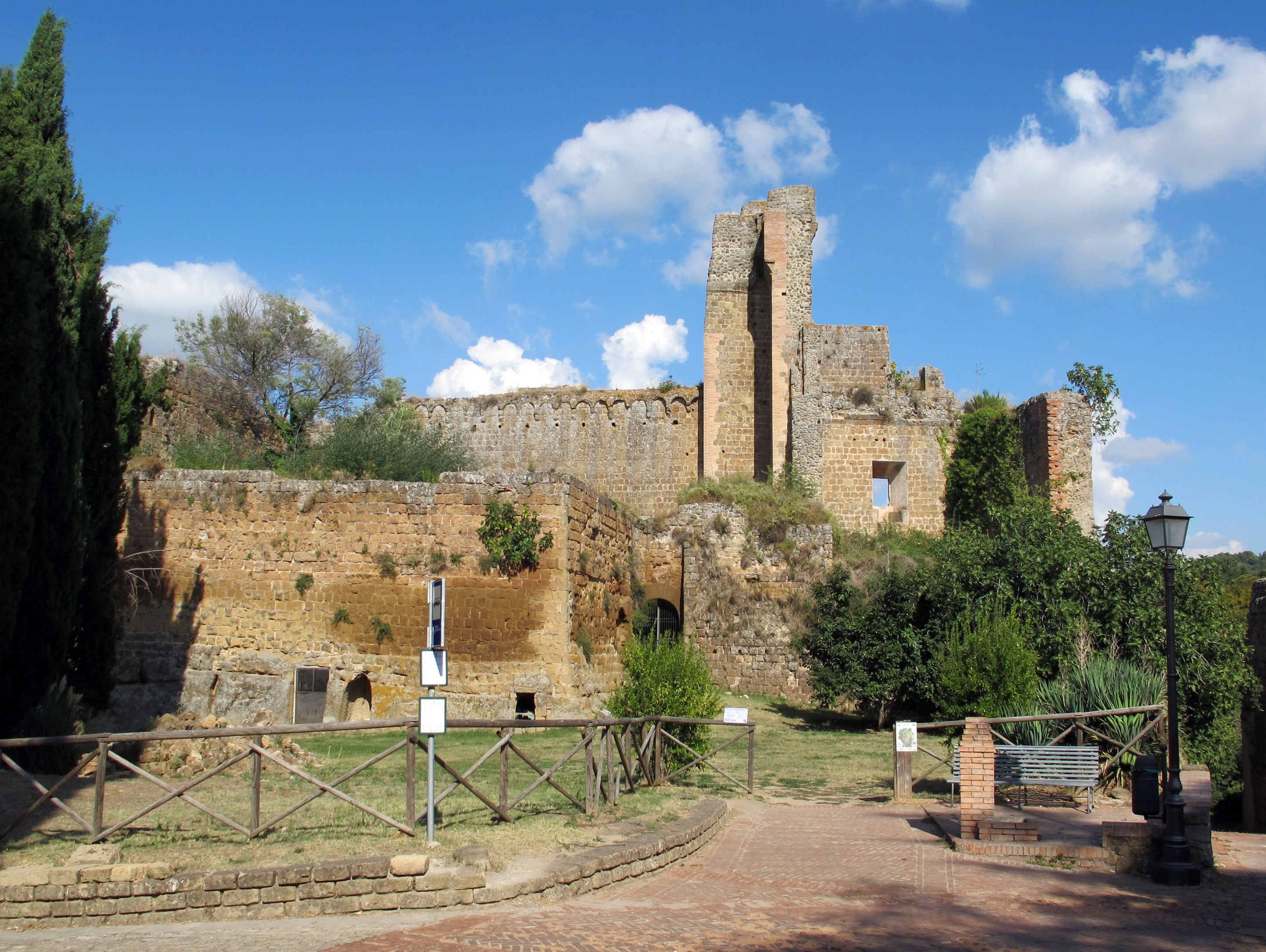It is known as an important Etruscan centre, medieval village and Renaissance, as well as an episcopal seat.
Monuments and places of interest
•Rocca aldobrandesca, built on pre-existing structures of the Etruscan era around the year one thousand as the seat and symbol of the power of the Aldobrandeschi family, remained abandoned towards the end of the thirteenth century, to then be restored during the fifteenth century by the Sienese. With the annexation to the grand duchy of Tuscany in the 16th century, Cosimo I de’ Medici had some renovation works carried out which, however, did not prevent the subsequent abandonment and consequent deterioration of the structure. Today the monumental ruins of the fortress are clearly visible.
•Palazzo Pretorio, with the loggia del Capitano, is located in Piazza del Pretorio, and seems to date back to the 12th century: it is attested in 1208 as the place where Aldobrandino VIII stipulated the own will. The building was subsequently restored by the Sienese after 1413, while in 1676 it is remembered as having prisons. Today it houses an exhibition of the Sovana museum complex.
•Palazzo dell’Archivio, in the central Piazza del Pretorio, dates back to the 12th century and was the residence of the judge after 1411. In 1676 it was already attested as the seat of the community archive. A clock is placed on the facade.
•Church of Santa Maria Maggiore, located in Piazza del Pretorio, seems to date back to the 12th century. Sacked by the Sienese in 1410 and by the Pitiglianos in 1434, it was substantially modified in the 16th century, when the adjacent Palazzo dell’Archivio was built. Up until the 17th century there was also a bell tower attached to the church, which was later replaced with the one with a sail that we still see today. Inside are works of notable interest: two frescoes of the Crucifixion between Saints Anthony and Lawrence and Saint Sebastian and Saint Rocco (1527) and the Madonna with Child Enthroned between St Barbara and Lucia and St Sebastian and St Mamiliano (1508); a painting with the four evangelists and the Eternal Blessing (16th century); a fragmentary Madonna and Child with Saints Raphael and Tobiolo, Mamiliano, Antonio da Padova and Lucia (16th century); a Crucifixion between Saint Anthony the Abbot and Pope Gregory VII (15th century); a very interesting ciborium with four tapered columns and a decorated canopy from the 9th century.
•Palazzo Bourbon del Monte, located in Piazza del Pretorio, was built in 1558 at the behest of Cosimo I. It was the residence of the Bourbon del Monte family, feudal lords of the municipality of San Martino sul Fiora. Having fallen into disrepair during the 19th century, in the 1960s the building was bought by Professor Luciano Ventura, who began a conservative restoration work which began in 1968 and ended fifteen years later.
•Church of San Mamiliano, located in Piazza del Pretorio, is perhaps the oldest church in Sovana (the foundation dates back to at least the 7th century ) century and from 1460 to 1776 it housed the remains of San Mamiliano. Long since reduced to a ruin, in 1986 some consolidation works were carried out on the perimeter walls and starting from 2004 a series of restoration operations were undertaken, completed in 2012 with the inauguration of the Museum of San Mamiliano</strong >.
During the excavations for the restoration of the church of San Mamiliano, the remains of a Renaissance cemetery were found under the floor, structures of a ancient Roman thermal building, and a terracotta olla containing the so-called little treasure of Sovana: solidi, 498 gold coins, datable to the 5th century AD, which they constitute the only archaeological evidence referable to the late ancient age in the Sovanese territory.
•St. Peter’s Co-Cathedral, dating back to the 10th century, was built by Gregory VII on a pre-existing 6th century building and the structure has remained virtually unchanged – except for the reconstruction of the facade in the 14th century and some renovations in later periods which however did not compromise the original characteristics – up to the present day. Some restoration work was carried out in 1999, which made it possible to make the crypt which houses the remains of Saint Mamiliano accessible again. Inside, the plastic decorations of the capitals are worth mentioning, with the depiction of biblical scenes, as well as pictorial works of great interest: a Madonna in glory with Saint Benedict and Saint John Gualberto (16th century); a Crucifixion of St. Peter (1671) by Domenico Manenti; a devotional painting depicting Saint Mary of Egypt (1481) by Tommaso di Tomè di Onofrio; a fragment of fresco of Saint Francis (15th century) by Carlo di Giovanni; a baptismal font in travertine dated 1494; a canvas of the Sacred Heart of Jesus by Maria Pascucci.
•The Hand of Orlando: An enigmatic and unique tuffaceous monument in the shape of a closed hand; it is located along the provincial road that connects Sovana to Sorano, just before the crossroads for Pitigliano.
Legend has it that the boulder was created by the paladin Orlando (nephew of Charlemagne), who stopped to pray near this boulder, and squeezed it with great force from leave the signs of his grip on the rock.



